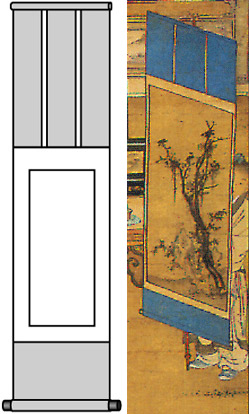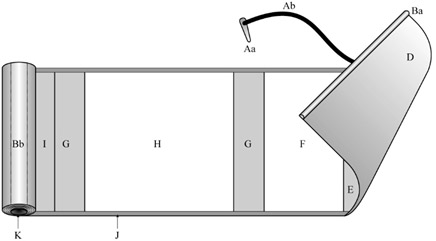Services
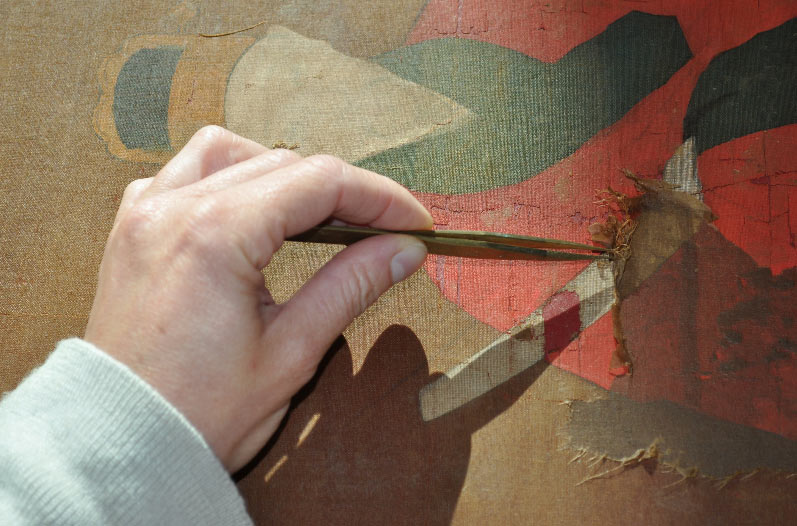
Technique
Conserving & restoring painting & calligraphy on silk and paper : hanging scrolls, handscrolls, album leaves, folding screens, rubbings, engraving, hand fans, embroidery, (kösi or kesi) weavings, these are the fields in which Camille Schmitt Studio specializes in.
Asian (China, Korea, Japan, Viêt Nam) cultures have their own presentation, conservation and restoration history. For example they are often mounted on scrolls, which is a complex technique and needs many years training.
Conservation and restoration treatment correspond to Museum standard, and norms of stability and reversibility.
The treatment always starts with an assessment of the painting condition to develop a treatment proposal. We offer advice on all aspects of collecting: consolidation, cleaning; filling and inpainting; simple lining, or mounting with silk strips on the edges (so-called jingpian mounting); hanging scroll or handscroll mounting, honeycomb cardboard presentation ; curative conservation (cleaning and reinforcing edges or hinges).
We also provide preventive conservation advice on display, storage, transport and conservation. We carry out pre-acquisition condition reports for collectors and museums. Photographic reports may be provided if asked for.
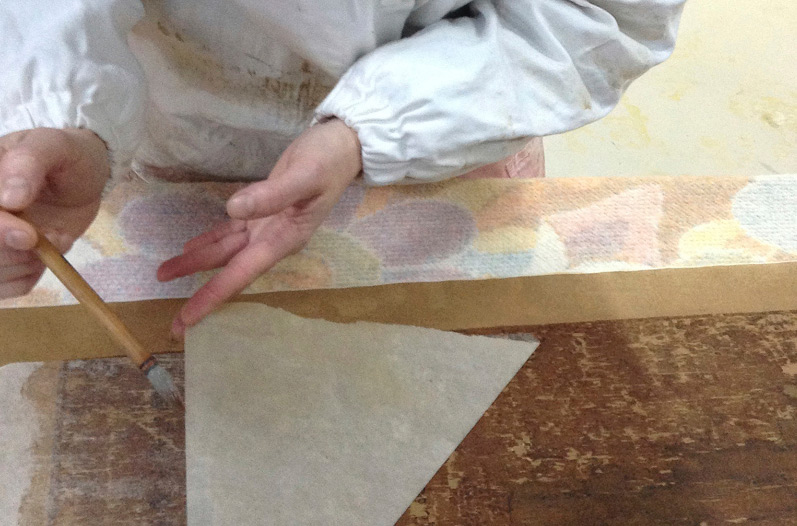
Respect of the work of art and its authenticity
The tradition of restoring and conserving in Asia is very old (in China, as early as 4th century), and its techniques and materials have been well established for centuries.
These techniques and materials have to be taken seriously when restoring asian paintings, so as to avoid alteration or depreciation of their intrinsic value.
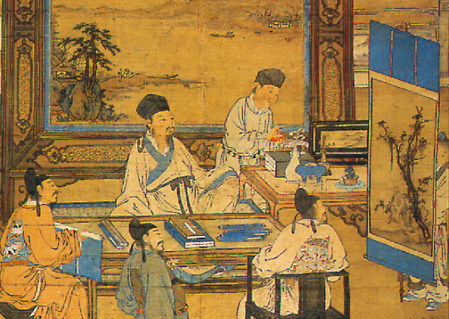
Hanging scroll
Paintings are framed with silk taffeta or damask, its upper part (Sky) longer than the lower one (Earth).
Handscrolls, which norms has been fixed under the 10th century, can be very long, and composed by 1, 2, or sometimes many works of art one after the other. It is the most precious kind of mounting.
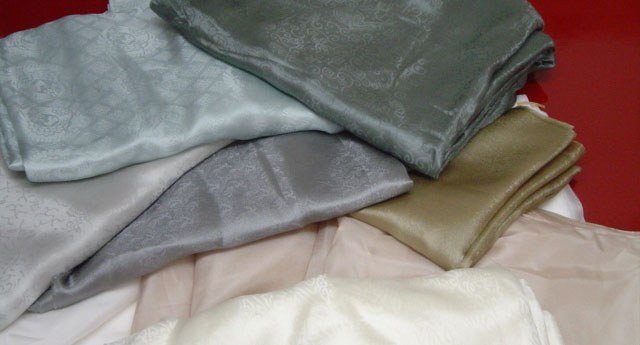
Material
Material and tools provided are essentially coming from Asia, chosen with great care:
- Handmade paper : Hanji, misu, pi, torinoko, uda, usumino, xuan from Hongxing, decorated or marbled paper
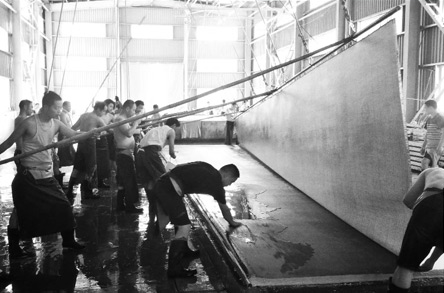
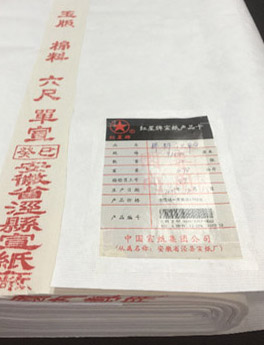
- Silk : silk taffeta, damask silk, brocade, satin, plaited silk ribbon. Our silk fabric is tinted by hand at the studio to best fit the paintings’ purpose.
- Foldingscreens (byobu) frame, lacquerwood frame, decorated metal hardware
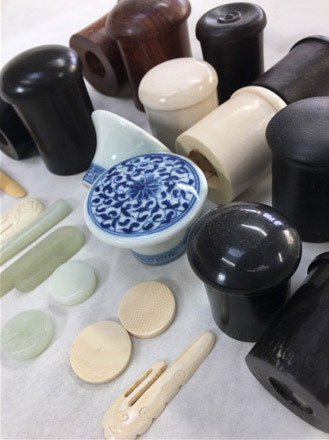
- Decorative items, new and antique: ring bolt, knobs and clasp (porcelain, cock-crystal, precious wood, jade, bone etc.)
- Pigments : shell white, Gambodge yellow, orpiment, carthame red, cinabar, azurite, malachite, ochre, ink.
We also use european material when not constitutive of the work of art, such as neutral honeycomb cardboard, stabilised red cedar wood, transportation boxes.
Our studio is secure (security alarm system with 24 hour monitoring; our system has been approved by the major insurance companies) and (is) well-equipped with 2 huge drying walls to accomodate large-format paintings.
Discretion for our clients is of paramount importance.
Camille Schmitt practices individually, and works within a team on large projects, especially for Japanese folding screens. We also work in collaboration with a frame conservator.
We carry out conservation work for museums, galleries, private clients, insurance companies in Europe, UK, Switzerland and United States, and for public Institutions.



